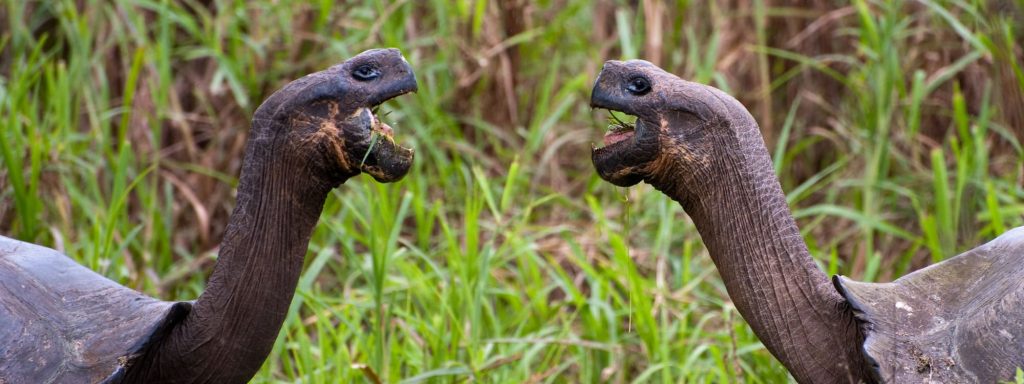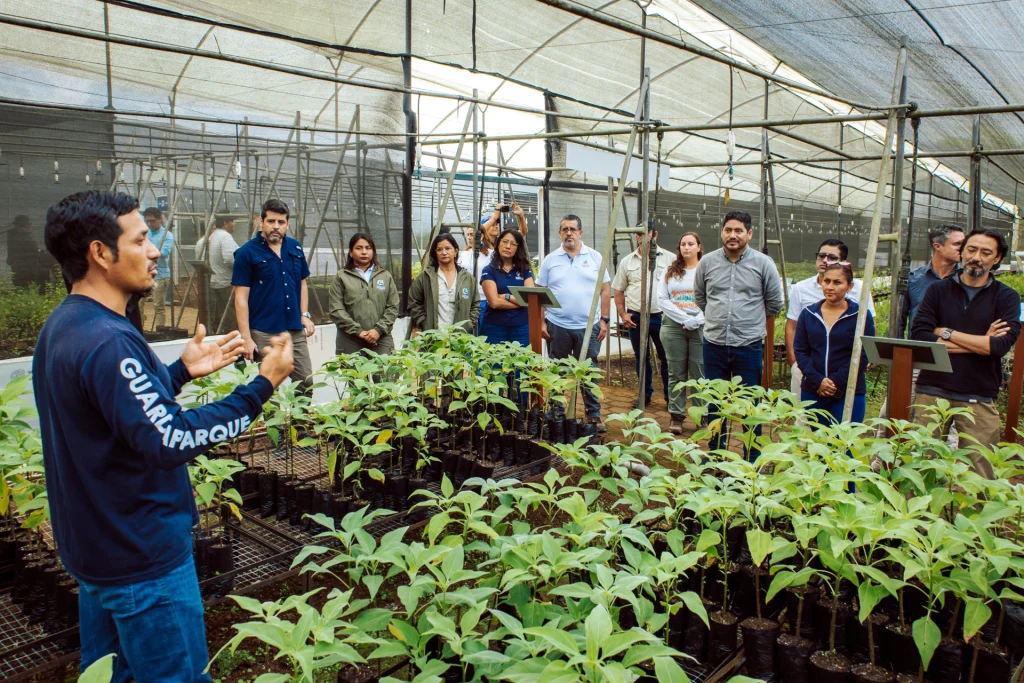Interview with Ecuadorian Minister of the Environment
//Versión en español abajo.//
We sat down with Gustavo Manrique to talk about the Ministry’s current conservation priorities. Manrique has served for almost 2 years as the lead administrator on environmental issues for the Ecuadorian government.

1. What is the Hermandad Marine Reserve?
The Hermandad Marine Reserve, established by Executive Decree 319, is located on the northeastern side of the Galápagos Marine Reserve (GMR) and extends 37,282 miles. The new Hermandad Marine Reserve serves as a biological corridor for more than 20 migratory species with varying degrees of threat, including sharks, sea turtles, and manta rays. These species migrate between the two protected areas: Galápagos and Cocos Island, Costa Rica, following the underwater mountain range that provides them with food. Some species from Galápagos such as Sea Lions, Waved Albatrosses and Galápagos sharks have been found in this area, leaving the Archipelago to feed.
Because this area is located in a biological corridor through which several vulnerable species pass during their migratory routes, protection for this area can be expanded to ensure that these species are not harmed by human activities.
2. What is the new marine reserve’s purpose?
The Ecuadorian government announced the creation of this new reserve at COP 26 in Glasgow, Scotland as a way to bring the world’s attention to the need to protect our oceans. The scientific proposal has undergone technical review and confirms the existence of the underwater mountain range used by endangered migratory species on their routes between Galápagos and Cocos Island, also known as a migratory highway.
3. What other efforts are being made to conserve marine species?
Various Conservation projects and programs in the Galápagos Marine Reserve (GMR) are part of Ecuador’s efforts to protect marine biodiversity:
- Galápagos Whale Shark Project, implemented between the Galapagos National Park Directorate (GNPD), Universidad San Francisco de Quito (USFQ) and the Marine Megafauna Foundation.
- Juvenile shark monitoring program in the breeding areas of the GMR, implemented between the GNPD and USFQ.
- Project “Role of oceanic islets in the conservation of highly migratory species,” between the GNPD, USFQ, Gálapagos Science Center, Migramar.
- Program to monitor the abundance and distribution of Marine Iguanas in the GMR, executed by the GNPD.
- Program to monitor Sea Turtles in foraging and resting areas, executed by the GNPD and USFQ.
- Program to monitor Giant Tortoises nesting on beaches, implemented by the GNPD and the IAC with the support of Galápagos Conservancy.
- Program to monitor the abundance and distribution of Sea Lions, implemented by the GNPD and USFQ.
- Project to monitor algae with negative behavior on corals, executed by the GNPD and the Fund for Invasive Species of Galápagos (FEIG).
- Pilot coral restoration plan in Academy Bay, implemented by the GNPD and Galápagos Conservancy.
- Project to monitor collectors for recruitment of Sea Cucumbers and other species, executed by the GNPD.
- Project to monitor whales, dolphins, manta rays, and megafauna around the GMR.
- Annual monitoring trip of key species in the GMR, executed by the GNPD and USFQ.
- Project to monitor ocean acidification in the GMR, executed by the GNPD and Escuela Superior Politécnica del Litoral (ESPOL).
- Mangrove monitoring program, implemented by the GNPD and ESPOL.
- Ecological monitoring program in the GMR, implemented by the GNPD and Charles Darwin Foundation
- Subtidal ecological monitoring project in the GMR, implemented by the GNPD and the Charles Darwin Foundation.
Various mechanisms protect fishing species, such as the Fishing Calendar, which establishes closed fishing seasons, open fishing seasons, sizes, catch sites, and other regulations for the conservation of commercially valuable marine resources. Finally, international cooperation has been instrumental in strengthening the GNPD’s institutional capacity to develop monitoring and conservation programs for marine ecosystems. International agencies such as Japan International Cooperation Agency, United States Agency for International Development, Korea International Cooperation Agency, Global Environmental Facility, and KFW Development Bank are among these partners. On the other hand, non-governmental organizations such as the Charles Darwin Foundation, Galápagos Conservancy, WildAid, Conservacion International, Fundación Jocotoco, Robert Wilson Marine Technologies, and World Wildlife Fund, among others, have consistently advocated for the funding of programs and projects for marine ecosystem management and conservation that have a long-term strategic plan to address the threats that may occur in the Galápagos Marine Reserve.



